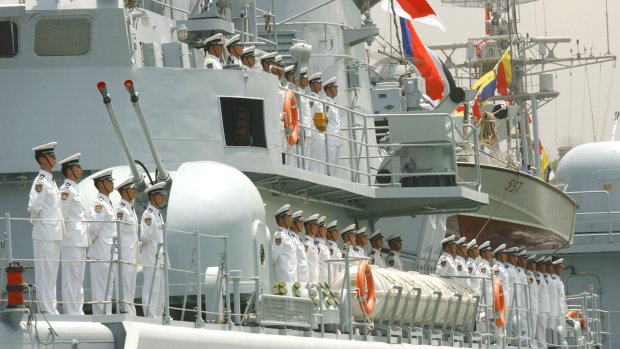Washington sends Xi a quiet message not to touch Taiwan

While the world was distracted by Trump's antics, American planners were developing a strategy to push back against Beijing in the South China Sea.
When Donald Trump shocked the Washington establishment – and much of the world – by getting himself elected as United States President four years ago, the message from diplomats and foreign policy analysts both in Australia and the United States was one of quiet reassurance.
No matter how flaky the president might look (and, remember, this was in the days before anyone realised that he wasn’t just likely to be flaky but sometimes dangerous), the institutions of government and diplomacy would grind on to plot a steady path through a dangerous world.

As what seemed an unending turnover of senior staff in the White House, and open warfare with agency heads continued unabated, it was hard to believe that steady path was possible, let alone happening.
Now, the turmoil – at least in the White House itself – is set to stop with the inauguration of Joe Biden as the 46th President on Thursday morning Australian time.
The shock of the last few weeks’ events and the sitting US President’s role in them, culminating in the US Capitol Building being besieged by an angry mob, still frames almost everything written about America just now.
And the focus over the next week will be on the continuing brawl over impeachment, and what Biden’s stimulus package might mean for the US and global economy.
But for Australia, the question of where the new administration picks up on foreign policy, particularly the Indo-Pacific, will be crucial.
That’s what made this week’s extremely unusual declassification of the Indo-Pacific strategy of the Trump administration, formalised in early 2018, so interesting.
The document was previously classified "secret" and "not for foreign nationals". It was officially declassified last week — 30 years earlier than would normally be the case.
The release was a gesture of reassurance to US alliance partners that "we are not fading away but doubling down" in the Indo-Pacific.
The ABC’s 7.30 program got early access to the document, in what was clearly a strategy by White House officials to make sure the message in the document – which, frankly, might get overlooked in an otherwise occupied Washington – got out to US allies in the region.
Those who have been involved in running US policy want to make sure the strategic architecture is explicit and on the public record, no matter how the more colourful actions of President Trump may have dominated the headlines, and that it becomes a jumping off point for the Biden administration.
A source intimately involved in the policy told me the release was a gesture of reassurance to the US alliance partners, including Australia, that "we are not fading away but doubling down" in the Indo-Pacific.
If you think about the time trajectory involved in this policy, it gives a high platform to look at how views of the region, and actions in it, have changed since 2017.
When the policy was being formulated across the US administration in 2017, there were still some analysts who believed that Chinese President Xi Jinping would not pursue the aggressive approach that he has, as illustrated by the end of any semblance of observing democratic niceties in Hong Kong, and increasingly aggressive moves in the South China Sea.
For its part, the US has also developed a much clearer focus, and stridency, in how it deals with China – both on the trade front and in strategic terms. The need to not blink with China has become a bipartisan position.
No comments:
Post a Comment